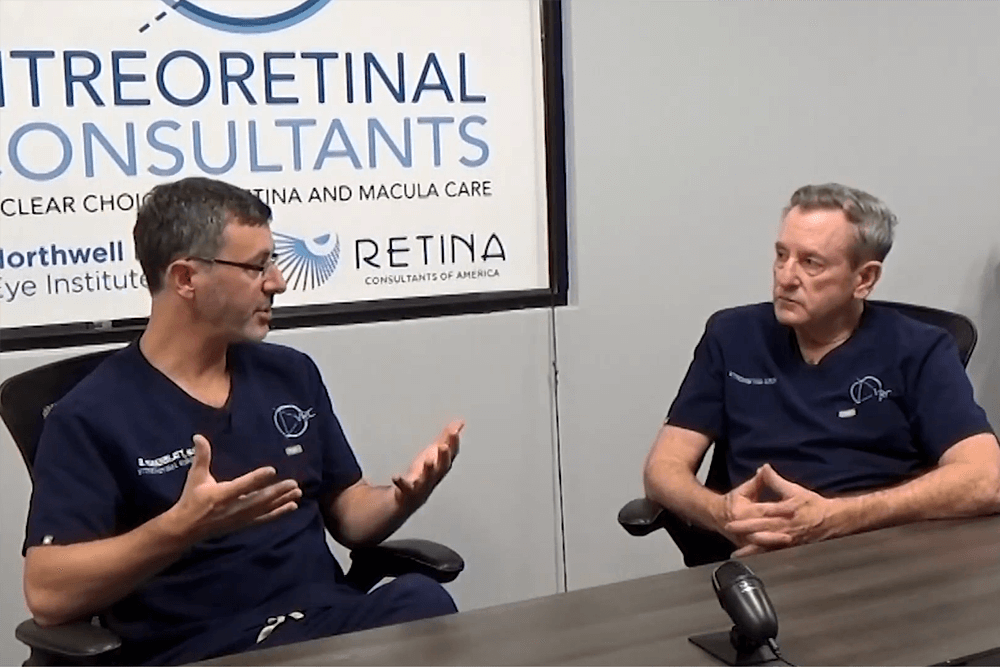Everything You Need to Know About Macular Degeneration

If you or your loved one has been diagnosed or suspects they have macular degeneration, you are in the right place. Macular degeneration is one of the leading causes of visual impairments among people over 40 years. As we age, the prevalence of this condition increases. This article is a comprehensive guide on what you should know about macular degeneration.
Learn more about Macular Degeneration from Dr. Fastenberg and Dr. Rosenblatt on the VRC Podcast, Retina in Focus.
Risk Factors
If you have a family history of AMD, you are much more likely get the condition at some point in your life. The good news is that there are treatments and ongoing innovations to help prevent vision loss. There is even a national trial underway looking at the genes of the eye to cure this condition.
Definition of Macular Degeneration
Before delving into what macular degeneration is, it is crucial to understand what the macular is. Macular refers to a part inside the eye that provides sharp and clear vision. In fact, it functions a lot like the film in a camera. Once light enters the eye, it is focused on the macular, providing central vision, allowing you to read, drive, and perform other vision-related activities.
However, the macular degenerates over time, and one of the common conditions it deals with is age-related macular degeneration, also known as macular degeneration (AMD). It often presents itself as the dry degeneration or atrophic form which presents as distortion of vision. Distortion implies that things that could be seen as “clear as day” now become blurry, smaller, or larger than they actually are. Likewise, straight lines can become wiggly with this condition.
While most people with macular degeneration start with dry degeneration, some patients develop the more serious form known as wet or exudative macular degeneration.
Other relevant findings:
- Drusen: These are small yellow deposits formed as a result of the failure of the normal function of the eye metabolism where cells that should be replaced accumulate instead
- Pigmentary changes to the macular, which is a less severe form of dry degeneration as it is basically less symptomatic
- Geographic atrophy of the macular, also known as atrophy, is an advanced form of dry degeneration and can cause severe vision loss
Wet age-related macular degeneration affects about 20% of those with AMD. This is a severe condition where the small blood vessels under the retina leak a clear watery fluid or blood whereby, when this liquid accumulates, it causes abrupt loss of vision. Fortunately, there is usually treatment for this type of macular degeneration, unlike dry degeneration. Without treatment, wet AMD progresses much faster than dry AMD. In the near future, there will be treatments for dry AMD.
Diagnosis
When you visit a retina specialist after suspecting that you have macular degeneration, you will have a thorough eye exam to determine what is happening at the back of the eye. The process will begin with preliminary testing, similar to those performed by a regular eye doctor. This includes checking eye pressure and checking vision. The specialist will also put drops in your eyes to dilate them and use special lenses to view the blood vessels, optic nerve, and retina to see if any changes qualify as signs of macular degeneration.
Patients may also be required to cover one eye and look through an Amsler grid to see whether the pattern lines are straight or wavy. Other tests that are commonly done include:
- Using optical coherence tomography (OCT), which involves using light waves to see the layers of the retina to determine whether there is any fluid
- Using a fluorescein angiogram, which involves using a special camera and dye that is injected into a vein in the arm to help evaluate blood flow within the retina
Treatment
Over the years, several treatment methods have been developed for treating macular degeneration. Initially, Avastin, a drug used to deprive tumors of blood circulation, was discovered to be effective in reducing leakage in patients with macular degeneration. This led to many of the current treatments now available for wet AMD.
When it comes to wet AMD, several treatment methods have been developed over the years. They include:
- The use of thermal laser surgery involves introducing a small beam of light into the retina to destroy the abnormal and leaking blood vessels. This mode of treatment has been deemed as destructive therapy over the years as it could potentially cause permanent vision loss, but not as bad as it could be if no treatment is undertaken
- Photodynamic therapy or cold laser: A medication called Verteporfin is injected into the patient's arm, followed by application of a laser to activate the medication in order to destroy the leaking blood vessels in the retina. Note that this treatment method is time-consuming, and patients are advised to stay away from sunlight for 48 - 72 hours.
- A painless process involves a small needle injecting a drug into the eye. Often, these injections are done each month for two to four months until a visible response is observed. When the specialist finds a response, the injection intervals are then increased by one to three weeks, depending on the results observed. Note that this treatment option is very effective in treating wet degeneration.
It is also worth noting that although wet degeneration is treated, dry degeneration continues progressing. Luckily, there are ways to decrease how fast it progresses, especially for those with early symptoms.
The Vitreoretinal Consultants are part of the Retina Consultants of America, a reputable organization that prioritizes eradicating vision impairments resulting from diabetic retinopathy macular degeneration, and other retina conditions. The facility is also part of many clinical and national trials to find treatments for dry AMD. So, if you are looking for treatment or more information on macular degeneration and other retina diseases, Vitreoretinal Consultants are an ideal resource.


